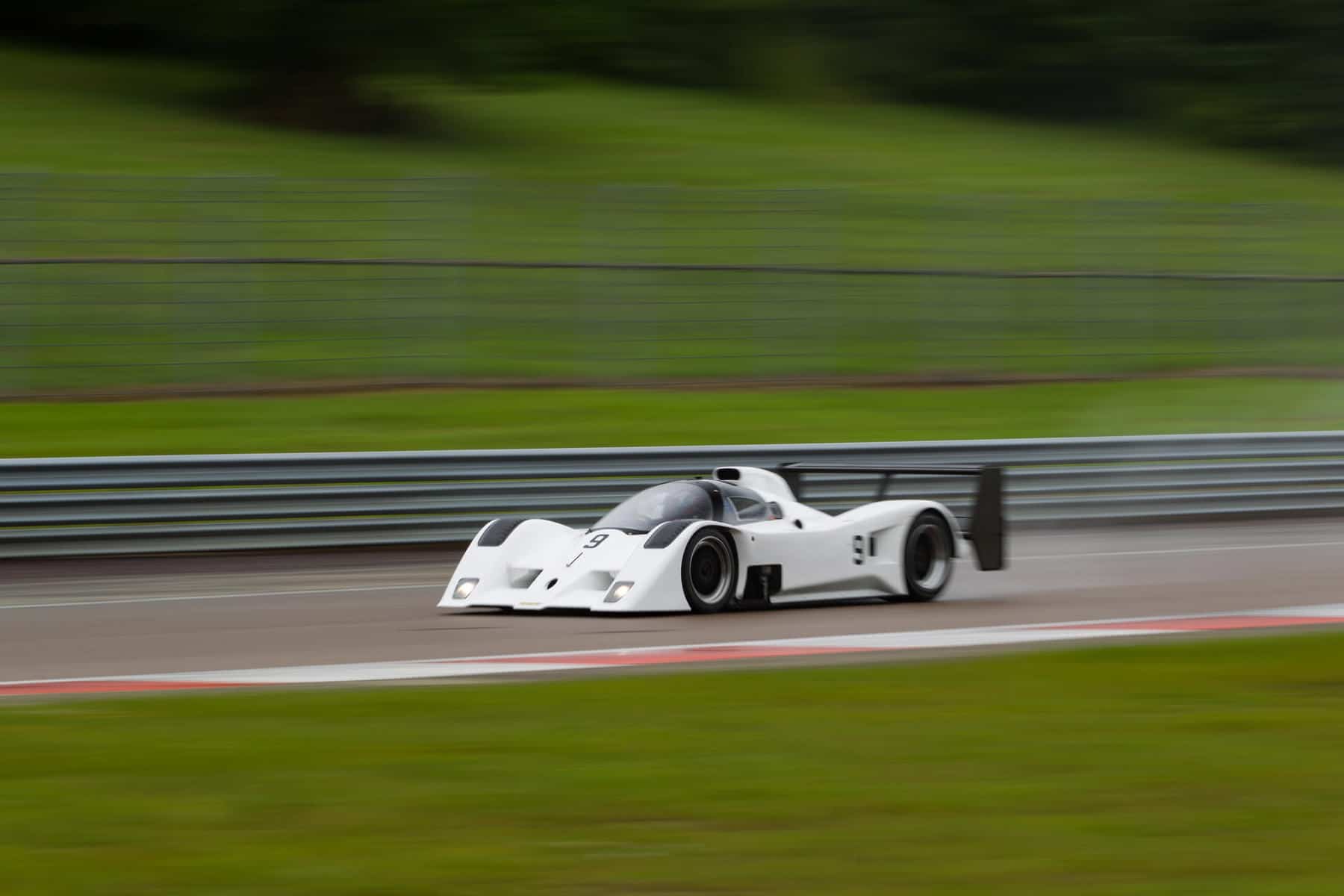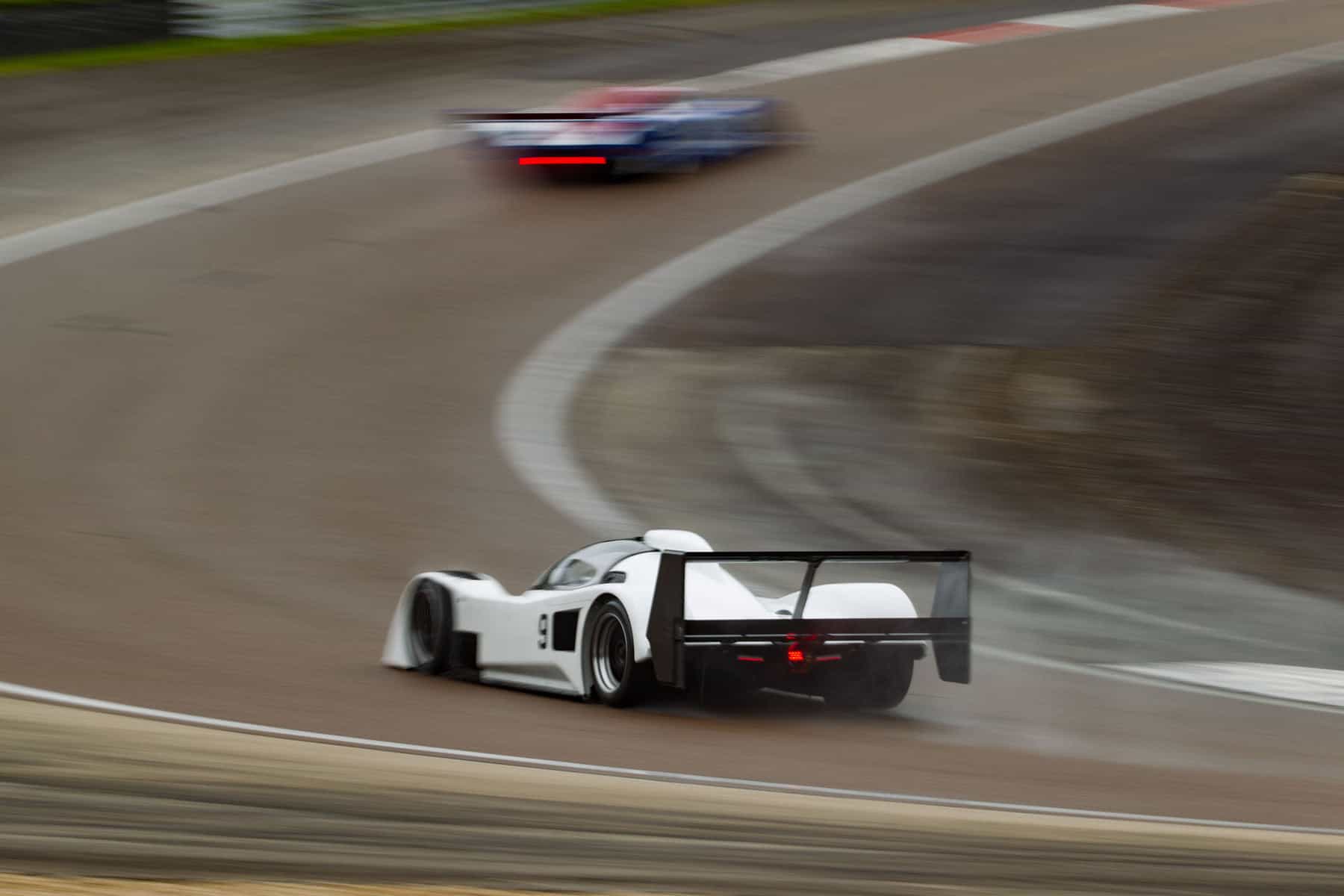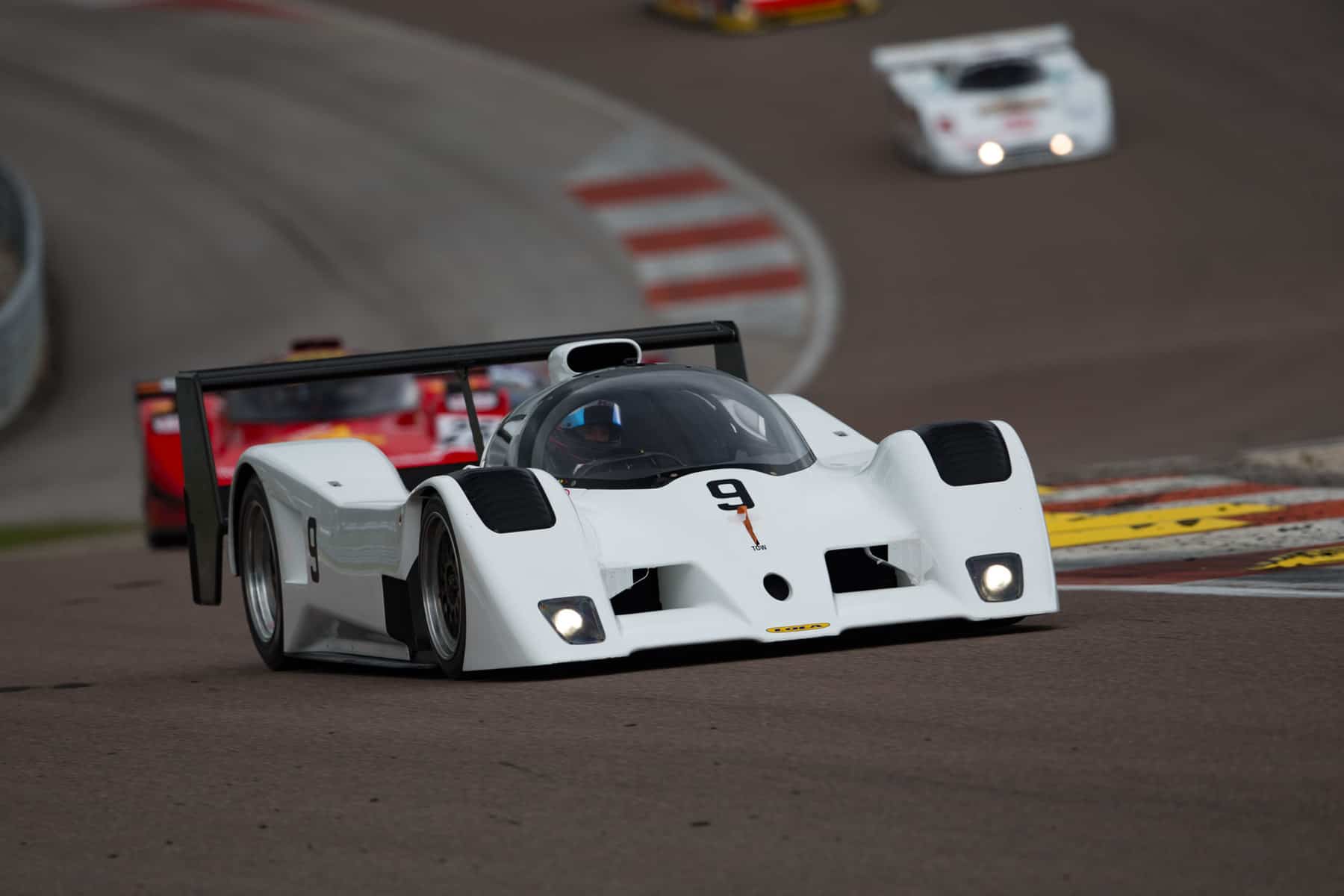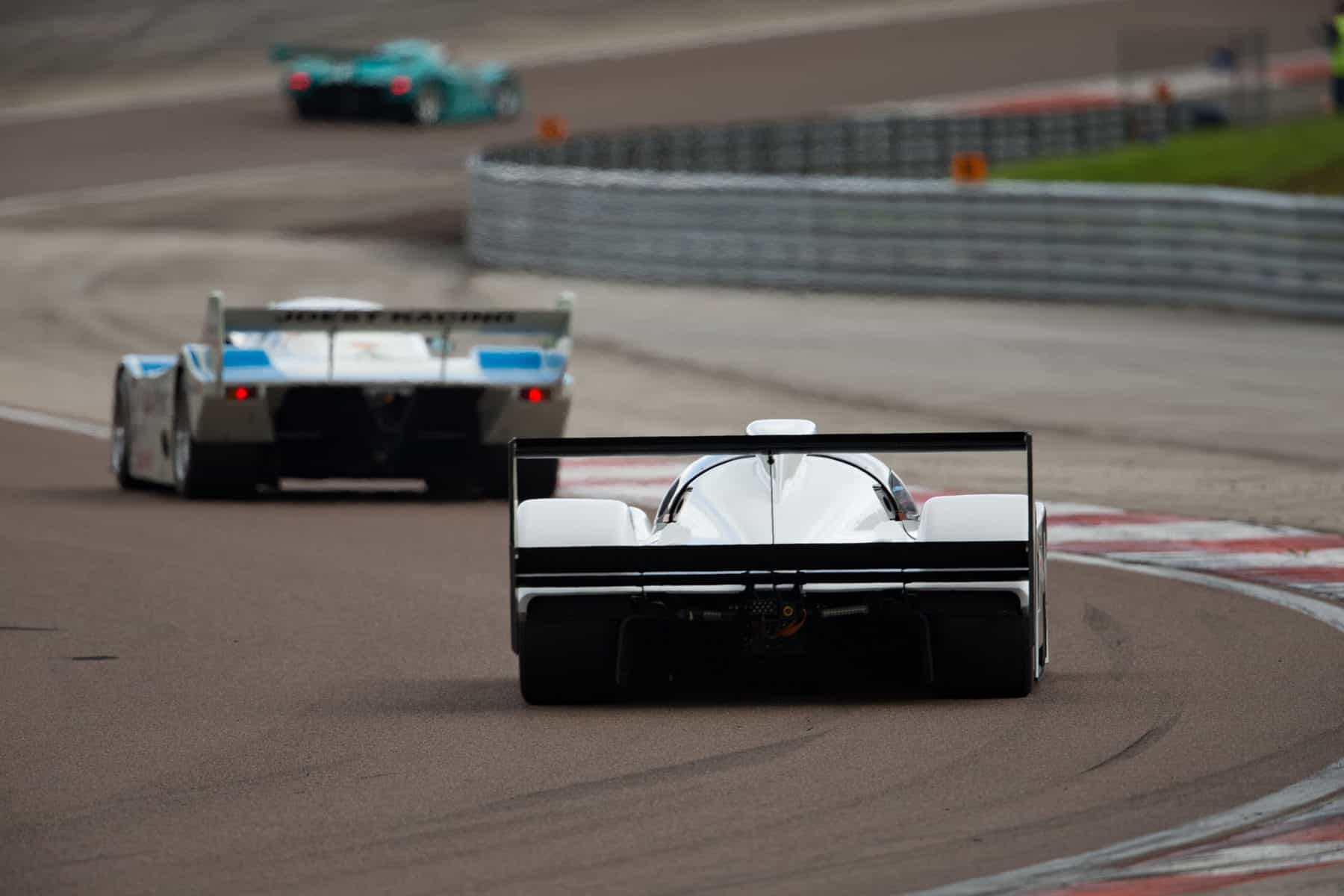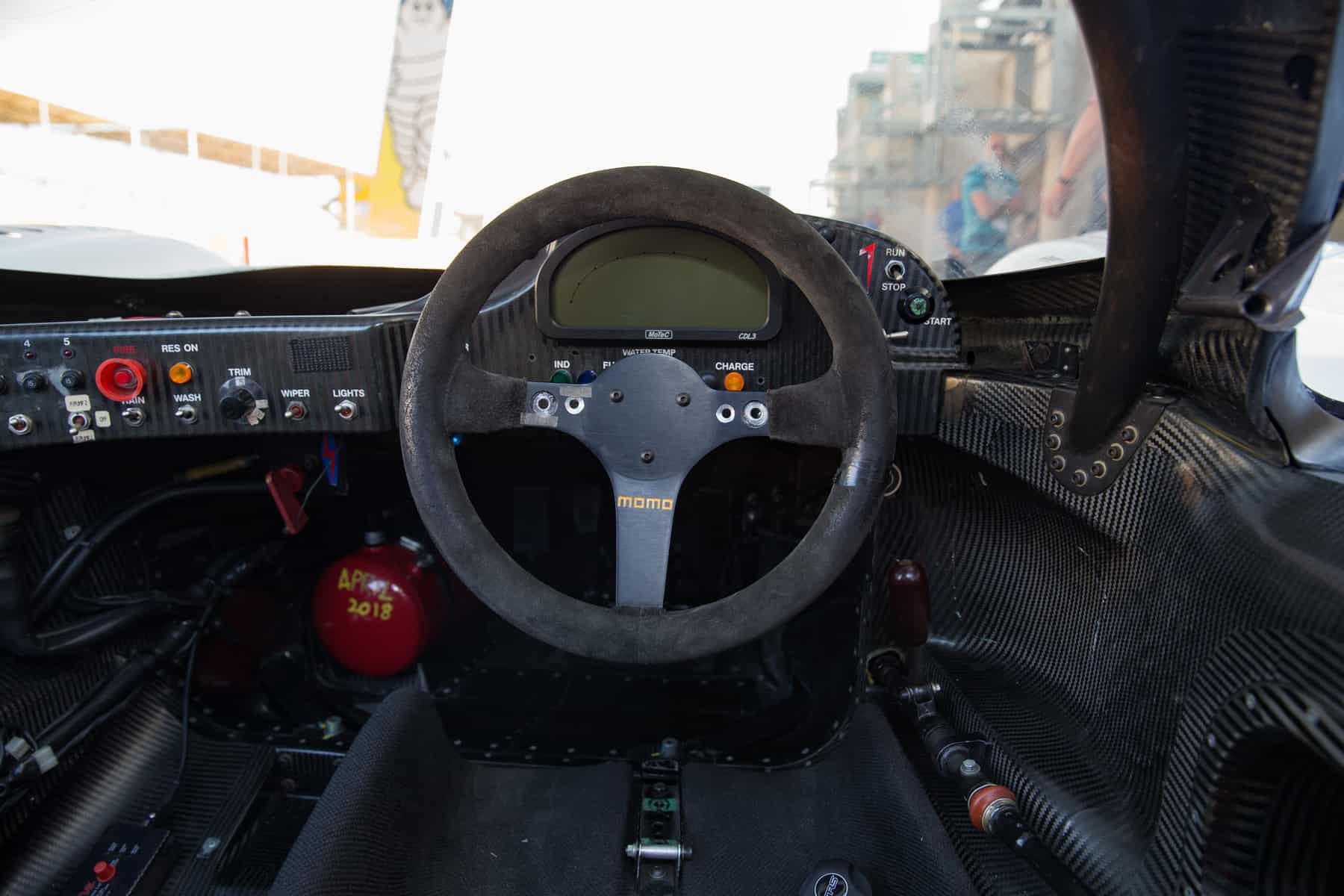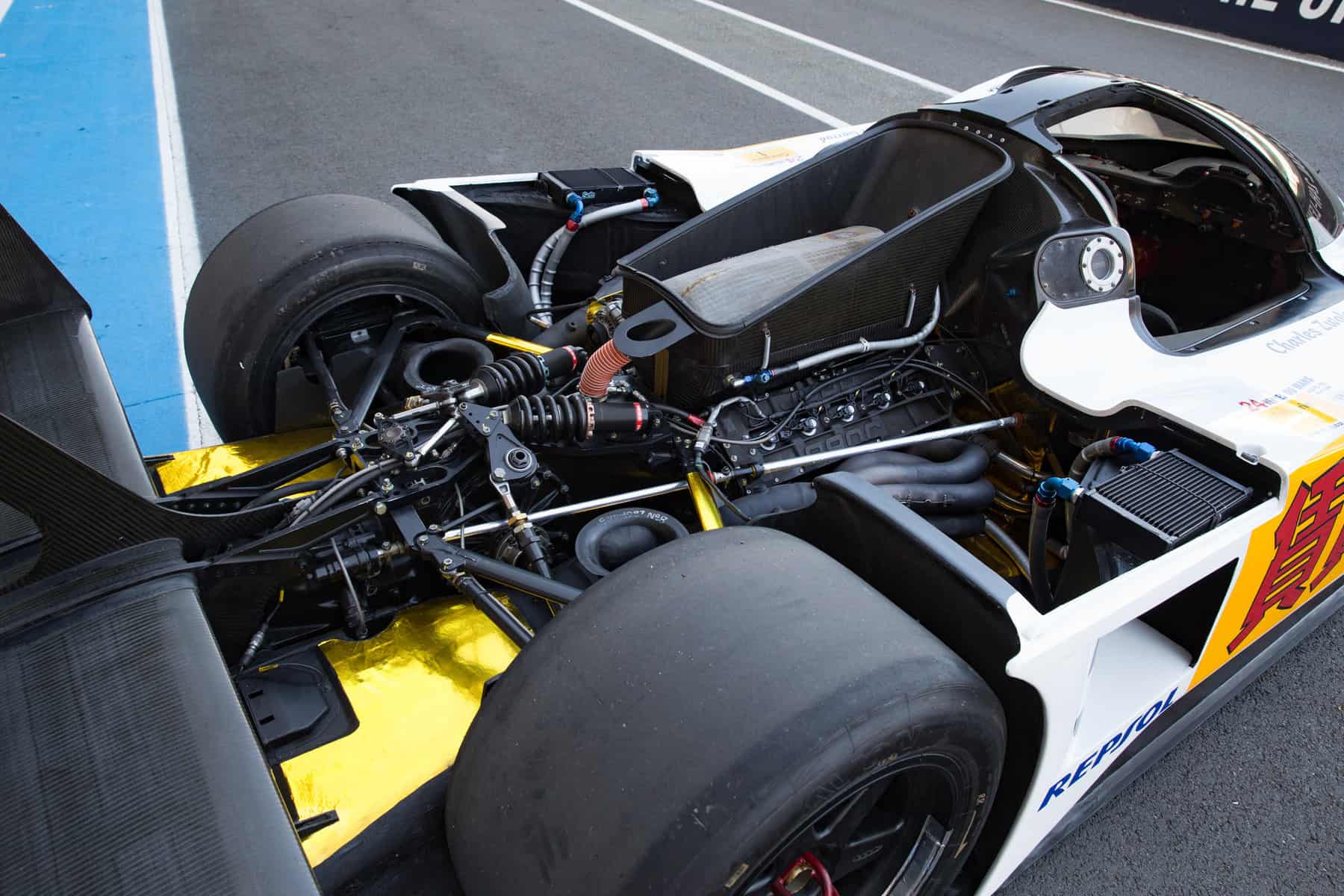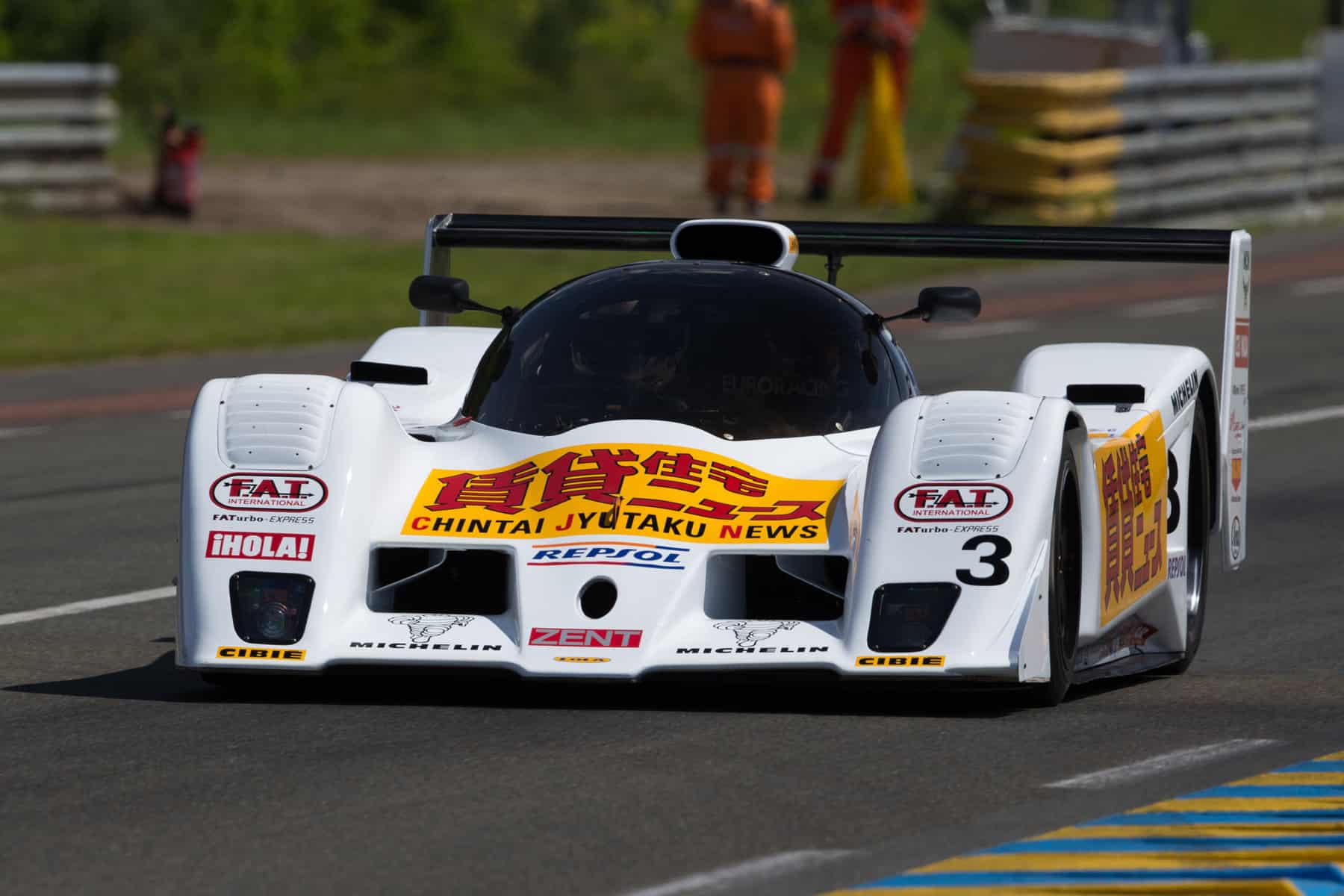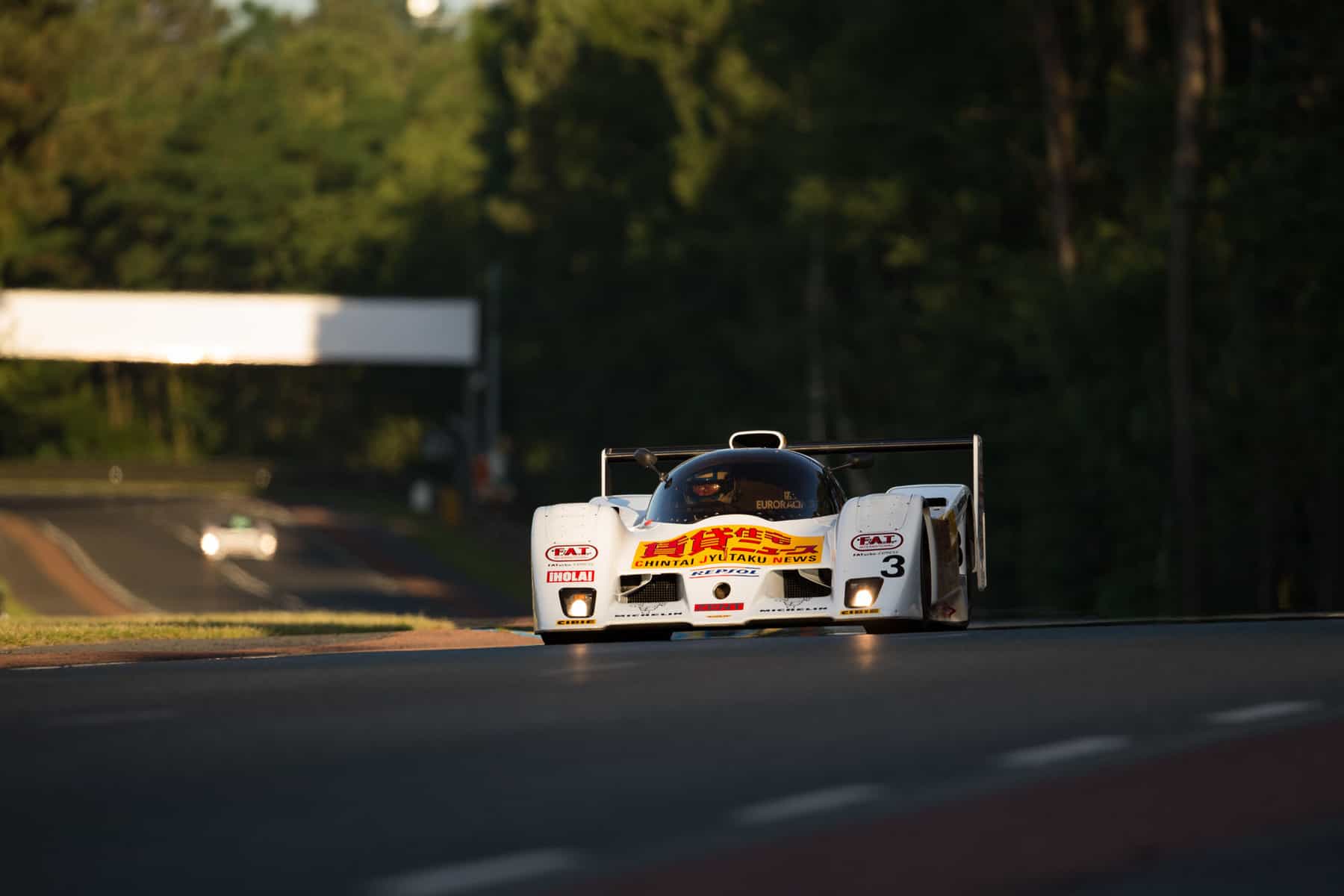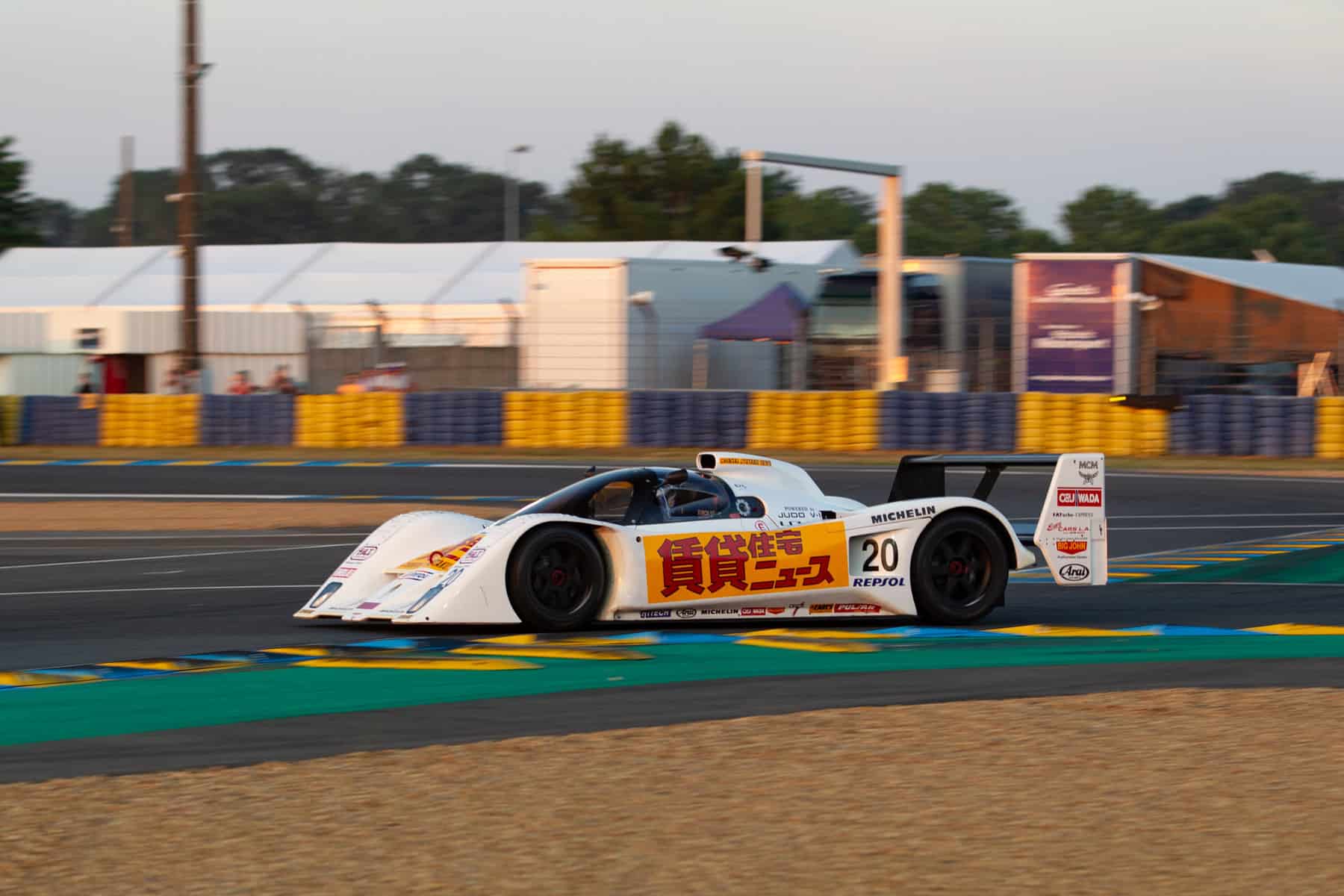Lola T92/10
The right car built at the wrong time
WORDS & IMAGES BY: WOUTER MELISSEN
The 1989 edition of the 24 Hours of Le Mans may very well have sported the best field in sports car racing history. Competing that year were Group C cars fielded by the likes of Aston Martin, Jaguar, Porsche, Lancia, Nissan, Toyota, Mazda, and Mercedes-Benz. Although not all of them were able to vie for the outright victory, it was Group C’s finest hour—but, as with all good things, it did not last.
Introduced to the Sports Car World Championship at the start of the 1982 season, the Group C category had very open regulations. A level playing field was nevertheless created by a minimum weight and a maximum fuel allotment per 100 km. The opportunity to run an engine of choice attracted an unprecedented number of major manufacturers. As a result, naturally aspirated V-8 and V-12 engines went head-to-head with turbocharged V-8s and flat-sixes in hotly disputed sports car races.
While a large portion of the Group C cars had the name and the logo of a major car company on the nose, most were designed and developed by specialist racing car constructors. The Jaguars for example were produced and raced by Tom Walkinshaw Racing (TWR) and Swiss specialists Sauber were responsible for the Mercedes-Benz badged cars. Commissioned to design the sports racers that housed the Nissan twin-turbo V-8 was British company Lola. It was a capable package, illustrated by Mark Blundell, who managed to qualify his Nissan R90 on pole for the 1990 Le Mans.
Looking at all these major manufacturers competing with considerable envy was Formula 1 supremo Bernie Ecclestone. He held notable sway with the sport’s governing body and managed to have the Group C regulations comprehensively revised. From the 1990 season onward, a new category was added for a second-generation Group C car that was powered by a naturally aspirated, 3.5-liter engine and had a minimum weight of 750 kg. During the first year, the new cars were designed to race side by side with the existing Group C machinery, but from 1991 onward, the old cars were to be gradually pegged back to ensure the second-generation racers held a clear advantage.
The 3.5-liter limit was deliberately chosen as it matched the engine regulations used in Formula 1 at the time. The cynics among us may see this as a devious ploy to trick the manufacturers involved in Group C to design an engine that would ultimately make the step up to Formula 1 a whole lot easier. As the existing cars were grandfathered in, the effects of the regulation changes were not immediately felt. Peugeot joined the sport late in 1990 and was joined from 1991 onward by similar machines fielded by Jaguar, Toyota, and Mercedes-Benz.
Among the first to feel the pinch was Lola as Nissan decided not to extend the collaboration beyond the 1990 season. Instead, the Japanese manufacturer went it alone with a V-12-engined machine of their own that was built but raced only once, in Japan. Former partner Lola did not give up on Group C. “Lola had the intention of developing a car that could be run by privateer teams for several seasons,” Lola’s project leader Wiet Huidekoper recalls. “Mazda also had shown interest in the car but TWR ultimately did a better job selling the car that raced as the Jaguar XJR-14 during the 1991 season.”
The rule changes were not limited to the drivetrain as revisions to the chassis and cockpit size stipulations meant that a second-generation Group C car was a different beast altogether. As a result, Lola had to start with blank slate. Having joined Lola in the summer of 1990, Huidekoper was the person entrusted with the pen to fill that slate. As a consultant he had worked with a variety of sports car teams during the second half of the 1980s. The Dutchman was hired specifically as the chief designer and project leader of the second-generation Group C car.
Like his rival designers, Huidekoper came to the same conclusion after reading the regulations; what was called for was effectively a Formula 1 car that could seat a driver and a theoretical, very small passenger. Accordingly, he created a cutting-edge, carbon-fiber composite monocoque. The front suspension was bolted to the front of the chassis, while aft of the cockpit, the engine and gearbox served as fully stressed members. Push-rod actuated springs and dampers were mounted in-board on all four corners.
With no manufacturer backing, Lola had to turn to John Judd’s Engine Developments Limited company for an engine. For the 1991 Formula 1 season, Judd had created an all-new “GV” V-10, which was also available in sports car racing trim. Even in this de-tuned configuration, the 3.5-liter produced more than 600 hp. Coincidentally, it was also Mazda’s engine of choice in its TWR-built MXR-01. The Judd V-10 was mated to a six-speed manual gearbox that was developed in-house.
What really set the new Lola T92/10 apart from a Formula 1 car was the bodywork. This was a crucial difference, as the fully enclosed bodywork made sports cars more aerodynamically efficient. A further advantage specific to the Group C regulations was that ground-effect [is this floors featuring a “ground effect”?] floors were still allowed. Pioneered in F1, ground effect uses tunnels in the floor and a big rear diffuser to accelerate the airflow running under the car. This creates a low-pressure area, effectively sucking the car to ground. Simply put, ground effect created free downforce as it did not come at the expense of drag like with conventional wings.
It did not take much imagination to see that the nose of the T92/10 resembled a contemporary F1 car with added fenders. The square holes on the bottom of the “nose cone” served to feed fresh air to the brake ducts and the laterally mounted radiators. Access to the narrow cockpit was through the side windows alone, while a big snorkel on the roof served as the V-10’s intake. A “double decker” rear-wing was fitted. The lower element was shaped not so much to generate downforce like a normal wing but to further increase the size of the rear diffuser and with it the ground-effect downforce.
Developing the car was one thing but finding a customer to run it was a different matter altogether. It was ready for delivery by the start of the 1992 season but by that time the future of Group C was in doubt. That complicated matters for Lola and brought a premature end to the conversations with Kremer Racing and Courage Competition, who both opted to continue running their existing cars. They had a point, as it was also still uncertain whether the Formula 1–inspired machine cars would last long enough to win the all-important 24 Hours of Le Mans.
Lola eventually did find a customer to buy two cars – the Dutch Euro Racing team. Established by the late Charles Zwolsman in 1991, the team ran a Cosworth-engined Spice during the 1991 season. Keeping up a somewhat questionable reputation of big-spending privateers in sports car racing, Zwolsman made his fortune with the distribution of narcotics. Huidekoper was well aware of his compatriot’s reputation: “It was a reason for me to withdraw from the project after the first test runs; I did not want to be associated with drug trafficking and quit Lola.”
Huidekoper was also not convinced that the Euro Racing team, with its limited budget, could do his car justice. A major issue was the choice of tires: “They opted to run Michelins, which had a smaller diameter than the tires from Goodyear, Yokohama, and Bridgestone for which the T92/10 had been designed.” This made the suspension too hard and could only really be addressed by a complete redesign of the suspension geometry. For Lola this made no financial sense, especially as it was decided in April of 1992 to bring an end to the Group C class.
Euro Racing continued with its Michelin-shod Lolas and fielded both cars in the 1992 Sports Car World Championship. The transmission proved to be the weak point of the car, causing retirements at Monza and Silverstone. One car actually lasted the distance at Le Mans but a full eighty laps behind the winning Peugeot. The team soldiered on but during the remainder of the year no notable results were scored despite the absolute lack of competition. The effort came to an abrupt end when Zwolsman was arrested and the team disbanded. The two cars were later auctioned off by the Dutch government.
There was redemption for the design some years later, when the third T92/10 built was acquired by McNeil Engineering. Huidekoper still remembers this effort fondly: “John McNeil ran the car on Goodyears, so the suspension actually worked as designed.” Driven by Robbie Sterling, the car was run anywhere a Group C car was still allowed and with great success. The Canadian racer won the Brands Hatch and Albacete rounds of the 1996 Interserie Championship and scored another victory the following year at the Hungaroring.
McNeil realized there was life left in the car and converted it to open form to compete in the 1998 International Sports Racing Series. That year, he fielded the car as the Lola 981, although this was no official Lola type name. The same design then formed the basis for the Ascari LMP1 racer that was backed by another Dutchman, Klaas Zwart. He called in his compatriot Huidekoper: “I helped convert the car to full flat-bottom specification, removing the ground-effect tunnels.” As an Ascari, the design was raced into the early 2000s.
Following his spell at Lola, Huidekoper went back to consulting for others. His primary customer was Porsche where he served as the chief designer of the 1998 Le Mans–winning 911 GT1: “It had the same design concept as the Lola T92/10 with the exception of the doors, which were substantially larger due to the GT1 regulations.” He continues: “It was the first Porsche with a full carbon-fiber composite chassis.” He was also involved with the stillborn V-10-engined Porsche LMP car, the Dallara-built Chrysler Le Mans Prototype, and helped Opel with its DTM Astra.
One of the very last Group C cars, the Lola T92/10 was the right car built at the wrong time that was raced by the wrong team. Its potential was underlined by the performance with McNeil Engineering and by the subsequent cars developed by Huidekoper. Today both Euro Racing cars still exist and the third chassis has been converted back to its Group C guise. At a recent Historic Group C race at Dijon, Nathan Kinch lapped almost the entire field in the McNeil Engineering car, giving a further indication of just how competitive the T92/10 could have been.
Not as well known as the cars he helped create, Huidekoper has had a prolific and successful career during which he helped create thirty-five different racing cars. These will be the subject of a new book he is currently writing together with British author Glen Smale, which should make for a very interesting read.
MORE FROM MAGNETO
Nothing found.
